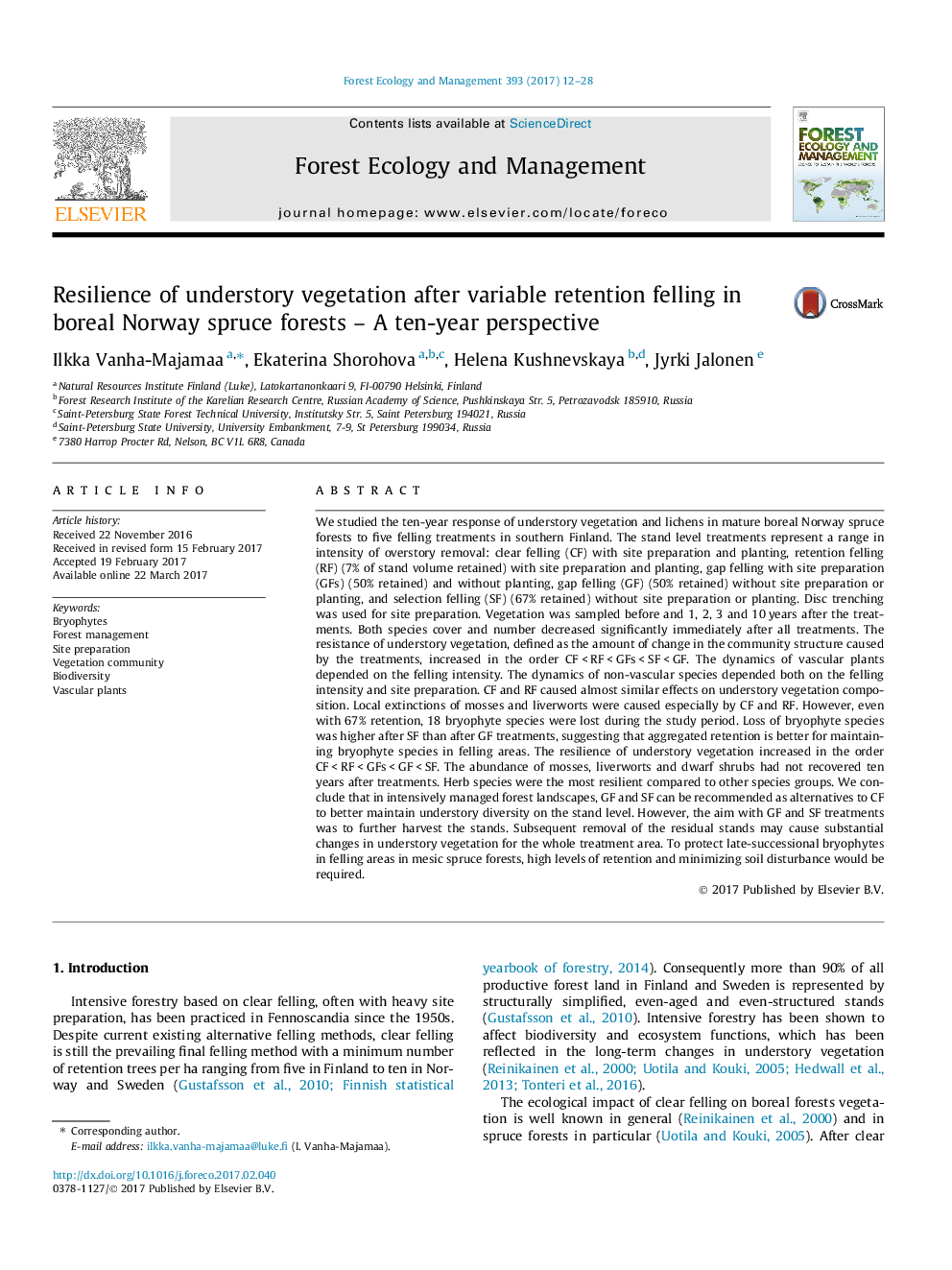| Article ID | Journal | Published Year | Pages | File Type |
|---|---|---|---|---|
| 6459372 | Forest Ecology and Management | 2017 | 17 Pages |
â¢Changes of understory vegetation increased with increasing intensity of treatment.â¢Low-level retention and clear felling caused similar effects on vegetation composition.â¢The resilience of understory vegetation was highest after selection felling.â¢Herb species were the most resilient as compared to other floristic groups.â¢Mosses, liverworts and dwarf shrubs had not recovered in ten years after treatments.
We studied the ten-year response of understory vegetation and lichens in mature boreal Norway spruce forests to five felling treatments in southern Finland. The stand level treatments represent a range in intensity of overstory removal: clear felling (CF) with site preparation and planting, retention felling (RF) (7% of stand volume retained) with site preparation and planting, gap felling with site preparation (GFs) (50% retained) and without planting, gap felling (GF) (50% retained) without site preparation or planting, and selection felling (SF) (67% retained) without site preparation or planting. Disc trenching was used for site preparation. Vegetation was sampled before and 1, 2, 3 and 10 years after the treatments. Both species cover and number decreased significantly immediately after all treatments. The resistance of understory vegetation, defined as the amount of change in the community structure caused by the treatments, increased in the order CF < RF < GFs < SF < GF. The dynamics of vascular plants depended on the felling intensity. The dynamics of non-vascular species depended both on the felling intensity and site preparation. CF and RF caused almost similar effects on understory vegetation composition. Local extinctions of mosses and liverworts were caused especially by CF and RF. However, even with 67% retention, 18 bryophyte species were lost during the study period. Loss of bryophyte species was higher after SF than after GF treatments, suggesting that aggregated retention is better for maintaining bryophyte species in felling areas. The resilience of understory vegetation increased in the order CF < RF < GFs < GF < SF. The abundance of mosses, liverworts and dwarf shrubs had not recovered ten years after treatments. Herb species were the most resilient compared to other species groups. We conclude that in intensively managed forest landscapes, GF and SF can be recommended as alternatives to CF to better maintain understory diversity on the stand level. However, the aim with GF and SF treatments was to further harvest the stands. Subsequent removal of the residual stands may cause substantial changes in understory vegetation for the whole treatment area. To protect late-successional bryophytes in felling areas in mesic spruce forests, high levels of retention and minimizing soil disturbance would be required.
